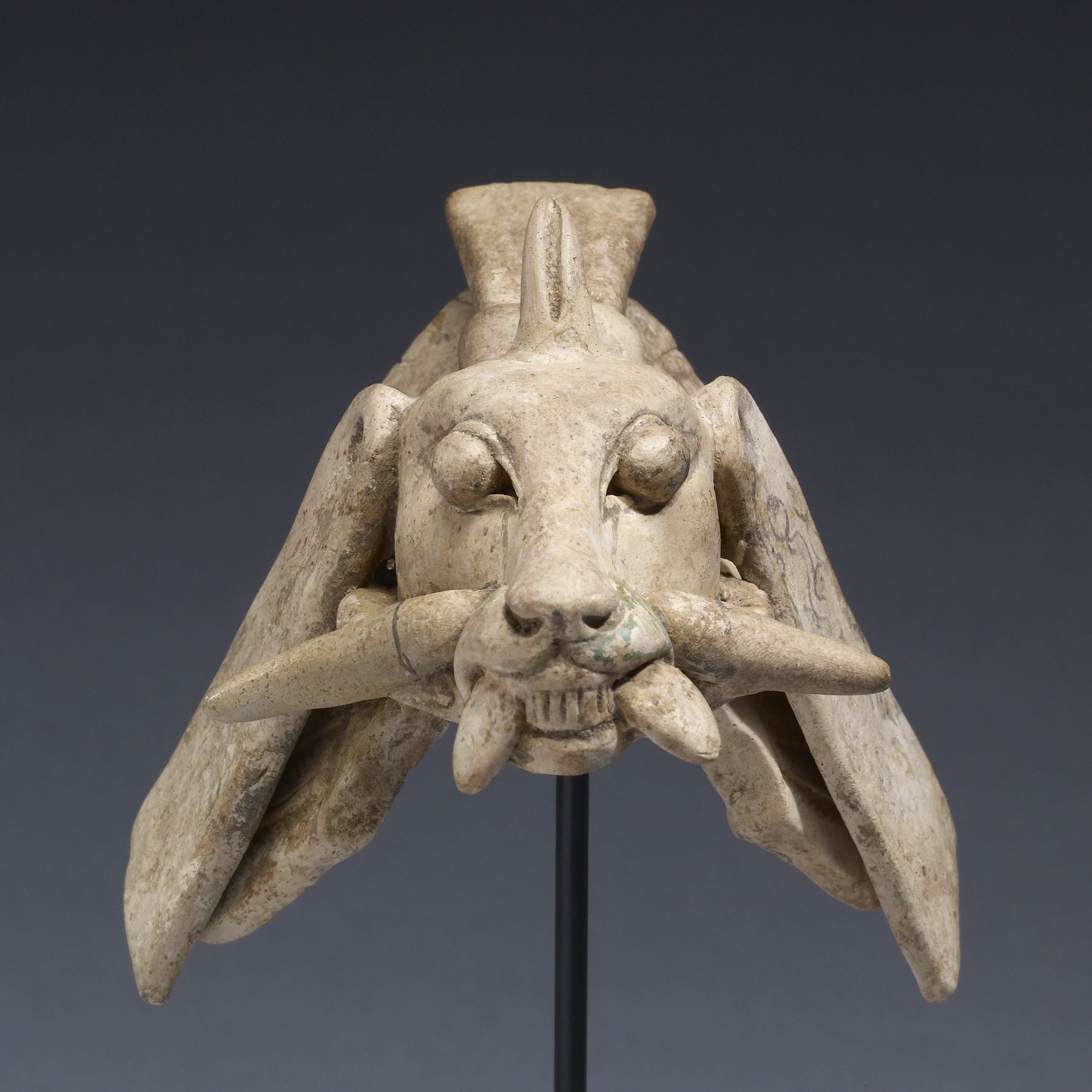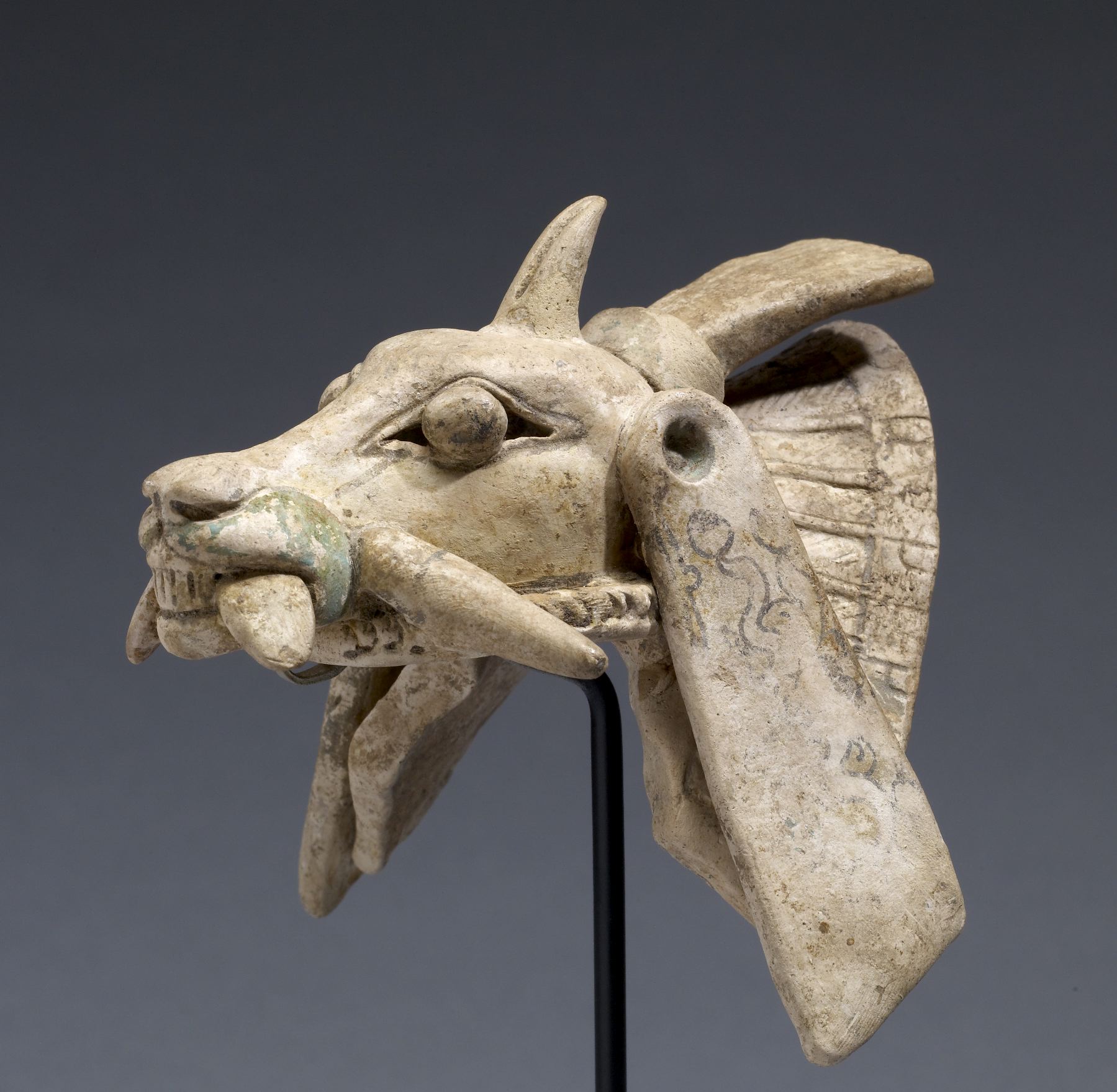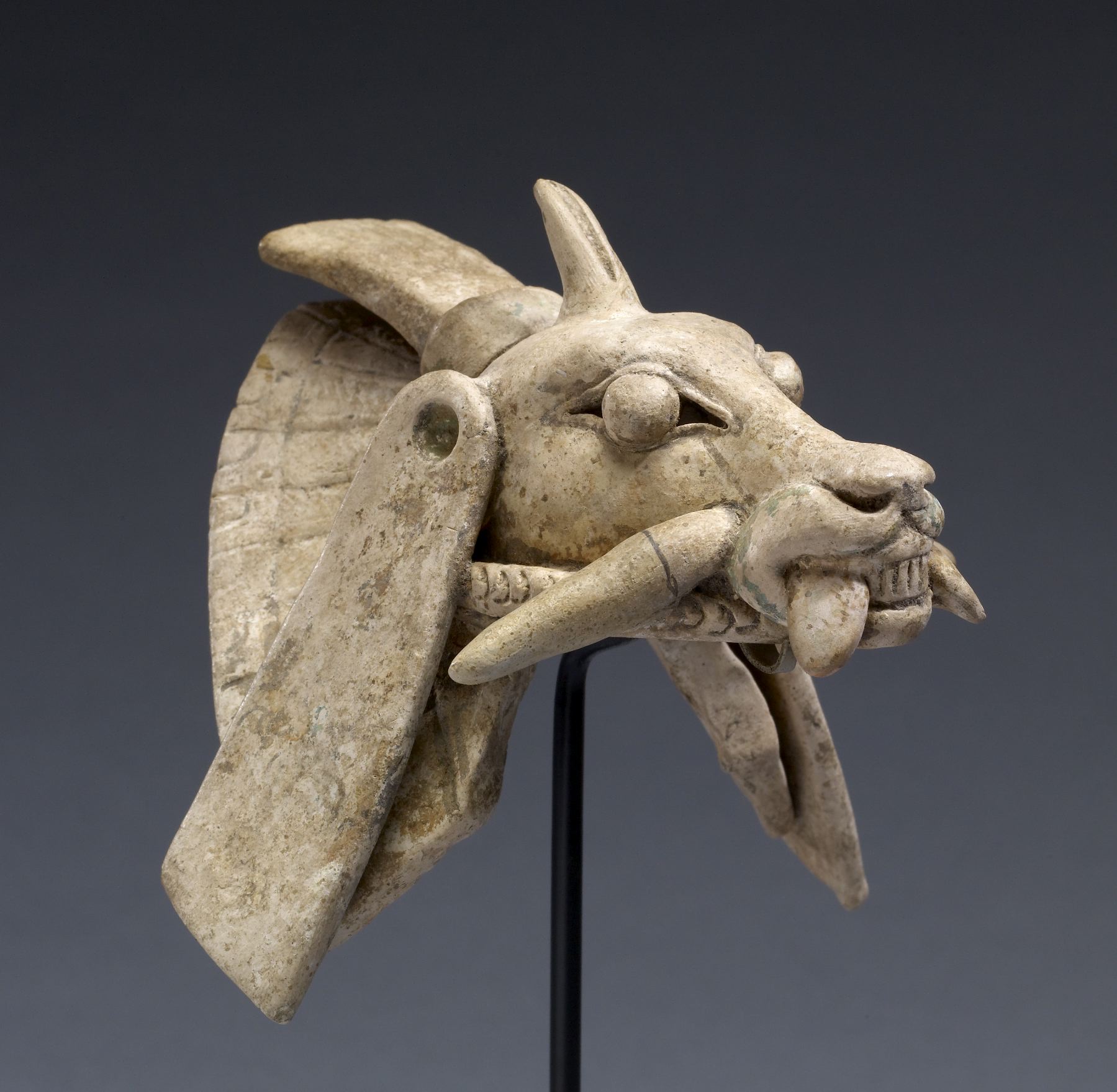Deer Head Mask
(Ancient Americas )
Fanciful headdresses were an essential component of performance costumes because they were crucial to the dancers' perceived transformation into the personage or spirit being in whose guise they performed. In Veracruz, figurines depicting warriors and a wide variety of performers often wear full-head masks, which can be removed to reveal the person inside, such as the amazingly detailed head-mask of a deer. Post-fire paint adorns the animal, with black-line curvilinear motifs on his long ear and bright blue-green pigment embellishing his upper lip. Large protuberances on his snout and the single horn atop his head suggest a composite zoomorph rather than a biologically accurate rendering. The deer was an important Mesoamerican food source, and its hide was used for a variety of purposes including the wrapping of ritual bundles and as leaves (pages) for screen-fold manuscripts which contained all manner of knowledge-from history to religious mythology to astrology and astronomy. The deer also was the animal spirit form of the mother of the seminal Mexican deity Quetzalcóatl and of the wife of the maize god among the Classic Maya.
Provenance
Provenance (from the French provenir, 'to come from/forth') is the chronology of the ownership, custody, or location of a historical object. Learn more about provenance at the Walters.
Stendahl Galleries, Los Angeles [date and mode of acquisition unknown]; John G. Bourne, 1960, by purchase; Walters Art Museum, 2009, by gift.
Exhibitions
| 2012-2013 | Exploring Art of the Ancient Americas: The John Bourne Collection Gift. The Walters Art Museum, Baltimore; Frist Center for the Visual Arts, Nashville. |
| 1998-2008 | Art of Ancient America, 1500 B.C.-1400 A.D.. Museum of New Mexico, Santa Fe. |
Geographies
Mexico, Veracruz (Place of Origin)
Measurements
H: 4 x W: 4 x D: 4 1/8 in. (10.2 x 10.2 x 10.4 cm)
Credit Line
Gift of John Bourne, 2009
Location in Museum
Not on view
Accession Number
In libraries, galleries, museums, and archives, an accession number is a unique identifier assigned to each object in the collection.
In libraries, galleries, museums, and archives, an accession number is a unique identifier assigned to each object in the collection.
2009.20.2






